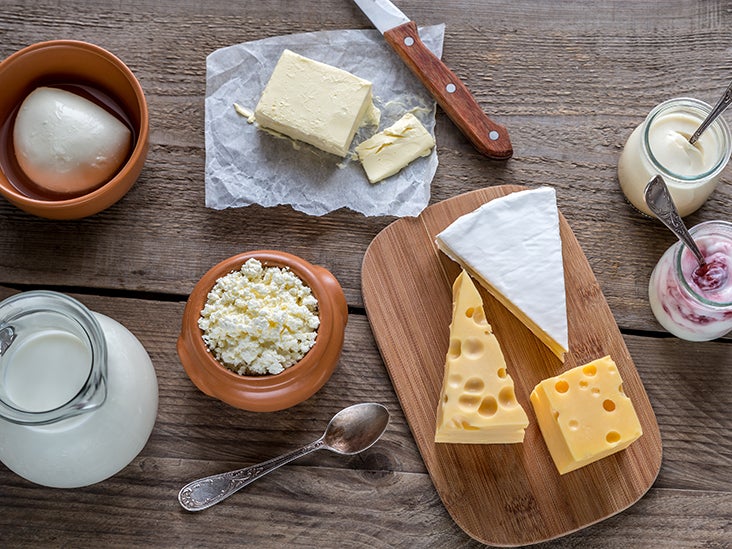
1 tsp of butter will not contain any more than 12 gm of lactose. Lactose-intolerant people can consume up to 12 grams of lactose at a time without symptoms and 1 tablespoon 14 grams of butter contains nearly undetectable levels.

Margarine without butter or milk check labels Non-dairy creamers check labels.
Can you have butter if lactose intolerant. Can You Have Butter If You Are Lactose Intolerant. The different varieties of butter are differentiated mainly by their fat content and by the. For the manufacture of butter the starting point is standardized cream.
This cream is subjected. Since butter only has a trace amount of lactose and youre not likely to consume large amounts of butter it should be safe for you to eat if you have lactose intolerance. What Can Happen It is possible however that even small amounts of lactose can be an issue for some.
Lactose-intolerant people can consume up to 12 grams of lactose at a time without symptoms and 1 tablespoon 14 grams of butter contains nearly undetectable levels. Youd probably never describe butter as sweetthats because its nearly lactose-free. Still butter does have very very small amounts of a milk.
If you want a deeper flavor allow the solids first to become golden brown. The French call this beurre noisette which means butter the color of a hazelnut. If desired for those who are not lactose intolerant reserve the milk solids for future use to enhance bread dough or vegetables such as baked potato or green beans.
Another great benefit of clarified butter is that it keeps refrigerated for more. Butter contains very less lactose. 1 tsp of butter will not contain any more than 12 gm of lactose.
A teaspoon of butter spread over a toast should not cause much intolerance in. Side effects of dairy consumption if you have lactose intolerance include diarrhea bloating flatulence nausea and cramps which can be uncomfortable and embarrassing if you are around other people. Can I have lactose if I am lactose intolerant.
People with lactose intolerance can be affected to varying degrees but the majority of people with lactose intolerance can tolerate small amounts of dairy products. A total of 12 -15 grams of lactose. Lactose is found in most dairy products like milk cheese and butter many are staples in an every day diet.
If you have been told you are unable to consume lactose and you think you have to compromise on your favourite dairy products you dont have to. The awareness around being intolerant to lactose has meant the creation of many milk alternatives to fit around this. Being intolerant to.
As you age you may find that you cant enjoy ice cream or milkshakes without painful gas or bloating afterward. Lactose intolerance is a fairly common natural condition that develops over time. If you have lactose intolerance symptoms will typically begin within 30 minutes to 2 hours of consuming dairy.
Symptoms can include gas bloating abdominal cramps diarrhea nausea and possibly vomitingLactose intolerance occurs when you cannot digest the sugar found in milk as explained by the Cleveland Clinic. Most lactose intolerant people can eat butter. Butter contains very little lactose as its basically a solid mass of milk fat with very little watery material in which the sugar lactose can dissolve.
You may eat or drink these lactose free fats any time. Margarine without butter or milk check labels Non-dairy creamers check labels. Lactose is in dairy but is in lower amounts in fermented dairy eg.
Cheese yogurt and butter. Steering clear of lactose isnt that easy as it is added to other foods like baked goods soups and sauces. And if youre taking any medications or supplements check to see if its in there too as lactose is a common ingredient in them.
Suffering from lactose intolerance never implies that you have to stop having dairy products for your entire life. Instead you may easily find a few dairy foods which you can digest easily than other ones especially cheese and yogurtEven though the amount of lactose tolerated by any lactose intolerant individual varies to some extent most of the people may digest aged cheese and. Butter is a very high-fat dairy product that contains only trace amounts of lactose.
This means its usually fine to include in your diet if you have a lactose intolerance. Products made with milk such as cream cheese yoghurt ice cream and butter also contain lactose and may need to be avoided if youre lactose intolerant. But the level of lactose in these products varies and is sometimes quite low so you may still be able to have some of them without experiencing any problems.
The most obvious foods that contain milk sugar lactose are dairy products such as milk cream yoghurt cheese and butter. However milk products are often used in processed foods. If the list of ingredients includes the words whey or casein it is likely that it also contains lactose.
Many foods sold in supermarkets will have an allergy label which will tell you if the food contains milk.